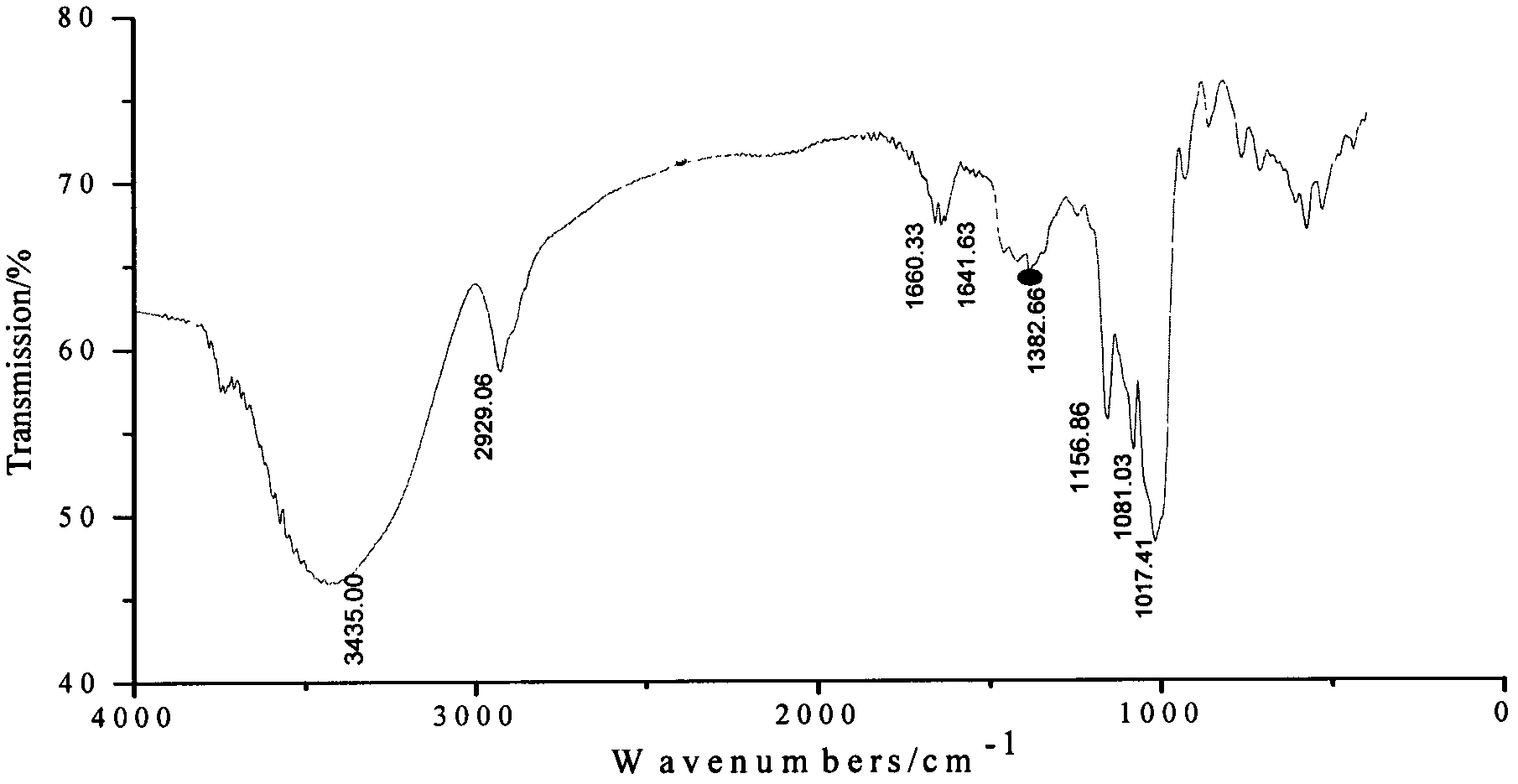Method for preparing double-crosslinking amphoteric tapioca starch
A tapioca starch and double cross-linking technology is applied in the field of preparation of double cross-linked amphoteric tapioca starch, which can solve the problems of application limitation and less research and development of cross-linked amphoteric starch, and achieves a product with good application effect, high stability and high application value. Effect
- Summary
- Abstract
- Description
- Claims
- Application Information
AI Technical Summary
Problems solved by technology
Method used
Image
Examples
Embodiment 1
[0037] (1) drying the tapioca starch to a constant weight in a 60°C vacuum drying oven to obtain dry base tapioca starch;
[0038] (2) Weigh 10g of dry base tapioca starch obtained in step (1) and deionized water into the reactor to prepare a starch solution with a mass fraction of 30% to 35%;
[0039] (3) 25g of dimethyl diallyl ammonium chloride cationic monomer and 0.3g of N,N'-methylenebisacrylamide were added to the starch solution obtained in step (2), and stirred for 15 minutes;
[0040] (4) Weigh 0.05g of ammonium persulfate and 0.05g of sodium bisulfite respectively and dissolve in 10mL of deionized water;
[0041] (5) when the material obtained in step (3) is heated to 40° C., the solution in step (4) is controlled to be added dropwise to the material obtained in step (3) within 30 minutes with a constant pressure dropping funnel, and the reaction is continued for 5 hours. Cool the system temperature to 30°C;
[0042] (6) take by weighing 0.1g epichlorohydrin and 0...
Embodiment 2
[0050] (1) drying the tapioca starch to a constant weight in a 60°C vacuum drying oven to obtain dry base tapioca starch;
[0051] (2) weighing 20 g of dry base tapioca starch obtained in step (1) and deionized water into the reactor to prepare a starch solution with a mass fraction of 30% to 35%;
[0052] (3) 35g of dimethyl diallyl ammonium chloride cationic monomer and 0.6g of N,N'-methylenebisacrylamide were added to step (2) starch solution, stirred for 15 minutes;
[0053] (4) Weigh 0.12g of ammonium persulfate and 0.12g of sodium bisulfite respectively and dissolve in 10mL of deionized water;
[0054] (5) when the obtained product of step (3) is heated to 40° C., the solution of step (4) is controlled to be added dropwise to the obtained material of step (3) within 30 minutes with a constant pressure dropping funnel, and the reaction is continued for 6 hours. Cool the system temperature to 30°C;
[0055] (6) take by weighing 0.2g epichlorohydrin and 0.3g sodium hydrox...
PUM
| Property | Measurement | Unit |
|---|---|---|
| degree of substitution | aaaaa | aaaaa |
| degree of substitution | aaaaa | aaaaa |
Abstract
Description
Claims
Application Information
 Login to View More
Login to View More - R&D
- Intellectual Property
- Life Sciences
- Materials
- Tech Scout
- Unparalleled Data Quality
- Higher Quality Content
- 60% Fewer Hallucinations
Browse by: Latest US Patents, China's latest patents, Technical Efficacy Thesaurus, Application Domain, Technology Topic, Popular Technical Reports.
© 2025 PatSnap. All rights reserved.Legal|Privacy policy|Modern Slavery Act Transparency Statement|Sitemap|About US| Contact US: help@patsnap.com



